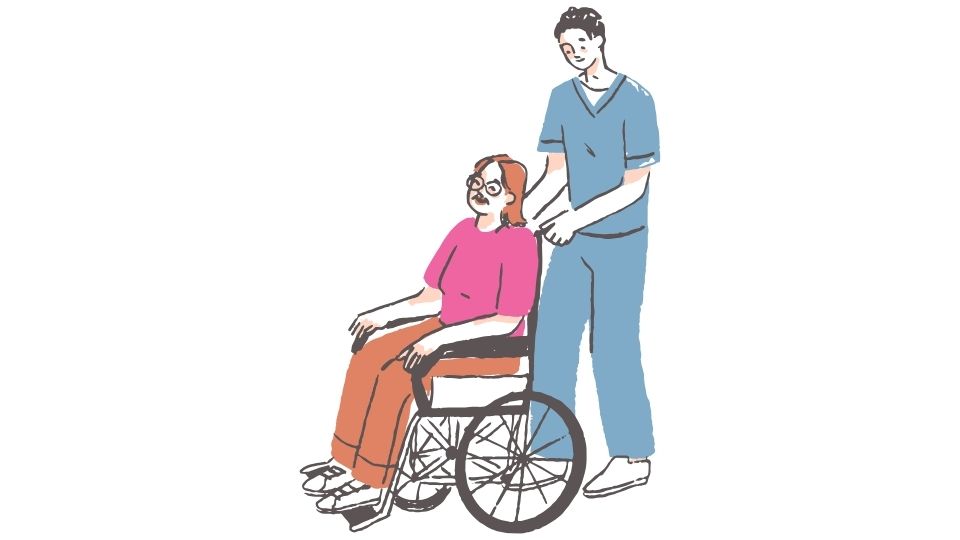What Health Equity Implementation Looks Like on the Ground

When it comes to health equity, let’s be real – we’re not where we need to be. Not even close.
The healthcare system wasn’t built with everyone in mind, and fixing that isn’t just about saying “everyone gets the same care now.” It’s about recognizing that different communities need different solutions to reach the same level of health.
Let me break down what health equity implementation actually looks like, why it matters, and how we can make real progress without just paying lip service to the idea.
The Truth About Health Equity Implementation
Skip ahead:
- What health equity actually means (and what it doesn’t)
- Key elements for real health equity implementation
- Where health equity is working (and where it’s failing)
- The roadblocks no one talks about
- What you can actually do about it
What Health Equity Actually Means

Health equity isn’t just a buzzword (though plenty of healthcare execs treat it like one).
It means recognizing that your ZIP code shouldn’t determine your lifespan. That your skin color shouldn’t predict your birth outcomes. And that your bank account shouldn’t dictate the quality of care you receive.
Health equity is about justice, not just equality. Equality would be giving everyone the same thing. Equity is giving people what they actually need to thrive.
Let’s be clear: health disparities aren’t accidents. They’re the result of systems designed to benefit some groups over others. Addressing equity means confronting uncomfortable truths about racism, classism, and other forms of discrimination baked into our healthcare system.
The Building Blocks of Real Health Equity

1. Equity has to be in the DNA
You can’t just slap a “we care about equity” statement on your website and call it a day. Organizations making real progress are:
- Embedding equity goals into every level of operations and measuring them just as seriously as financial targets
- Diversifying leadership so decision-makers reflect the communities they serve
- Creating accountability systems with actual consequences when equity targets aren’t met
The Massachusetts General Hospital created a comprehensive equity dashboard that tracks disparities in 23 quality measures across race, ethnicity, language, and insurance status. When they spot a gap, they assign specific teams to close it. That’s putting your money where your mouth is.
2. Community voices at the center
The most successful equity initiatives follow one simple rule: nothing about us without us.
This means:
- Co-designing programs with community members
- Hiring from affected communities
- Building partnerships with trusted local organizations
When Kaiser Permanente wanted to improve Black maternal health outcomes, they didn’t just create programs in a boardroom. They partnered with Black-led community organizations and doulas who already had trust in the communities they were trying to serve.
3. Data that actually shows the truth
You can’t fix what you can’t measure. And you can’t measure what you don’t track.
Real equity work requires:
- Collecting demographic data on race, ethnicity, language, gender identity, and other factors
- Stratifying quality metrics to see disparities clearly
- Setting specific targets for closing gaps
Providence Health System found that when they started breaking down their diabetes control rates by race and ethnicity, they discovered a 10% gap between white patients and patients of color. That finding led to targeted interventions that actually improved care.
4. Addressing social drivers head-on
Clinical care is only about 20% of what determines health outcomes. The rest? Social and environmental factors.
Forward-thinking organizations are:
- Screening for social needs like food insecurity and housing instability
- Building referral networks to connect patients with resources
- Advocating for policy changes that address root causes
CareOregon’s Housing Impact Program provides both housing and intensive case management for high-need Medicaid members. They saw a 43% reduction in emergency department visits among participants.
Where Health Equity Implementation Is Working
Some bright spots that actually give me hope:
State-Level Innovation
Several states are putting equity at the center of their Medicaid programs:
California’s CalAIM program offers “Community Supports” that address health-related social needs like housing services and medically supportive food. They’re saying the quiet part out loud: healthcare is about more than just medicine.
Pennsylvania requires Medicaid managed care plans to reduce health disparities by at least 3% annually in key metrics. If plans don’t make progress, they face financial penalties.
Community Health Worker Success Stories
Arizona implemented a behavioral health integration program in Medicaid that employs formerly incarcerated individuals as community health workers to support others transitioning back to the community.
The result? Lower recidivism rates AND better health outcomes. It’s almost like giving people meaningful employment and healthcare access helps them succeed. Who knew?
The Roadblocks No One Talks About

Let’s be honest about what’s really standing in the way:
1. The “Business Case” Trap
Too many leaders still want to see a “business case” for equity work. But here’s the uncomfortable truth: sometimes doing the right thing costs money. Not everything that matters has an ROI you can put on a spreadsheet.
2. The Comfort Problem
Meaningful equity work requires having uncomfortable conversations about power, privilege, and racism. Many healthcare leaders would rather implement surface-level changes than confront these deeper issues.
3. Short-Term Thinking
Real equity work takes time. But our healthcare system rewards quarterly results, not generational change. This mismatch creates perverse incentives to focus on quick wins rather than addressing root causes.
4. Data Problems
Many healthcare organizations still struggle with collecting accurate demographic data. In some systems, race and ethnicity data is missing for 30-40% of patients. You can’t address disparities you can’t see.
Moving From Talk to Action

If you’re actually serious about implementing health equity (not just talking about it), here’s where to start:
For Healthcare Leaders:
Make equity non-negotiable. Tie compensation to equity goals. What gets measured gets done; what gets paid for gets done faster.
Invest in your data infrastructure. You need good data to identify disparities and measure progress.
Hire for diversity at EVERY level. Especially leadership. Research shows that diverse teams make better decisions and are more innovative.
Allocate real resources. Equity work isn’t free. Budget for it like any other strategic priority.
For Providers:
Examine your own biases. We all have them. The question is whether we’re aware of them and working to mitigate them.
Screen for social needs. Ask about housing, food security, and transportation. Then connect patients to resources.
Practice cultural humility. Recognize that you don’t know what you don’t know about your patients’ lived experiences.
Advocate for system change. Use your voice and privilege to push for policies that promote equity.
Health equity implementation isn’t a destination – it’s an ongoing journey of improvement, learning, and sometimes uncomfortable growth. But if we want a healthcare system that truly serves everyone, we don’t have a choice but to do this work.
And in the end, isn’t that what healthcare should be about? Making sure everyone has what they need to be healthy, regardless of who they are or where they come from? I think so.
